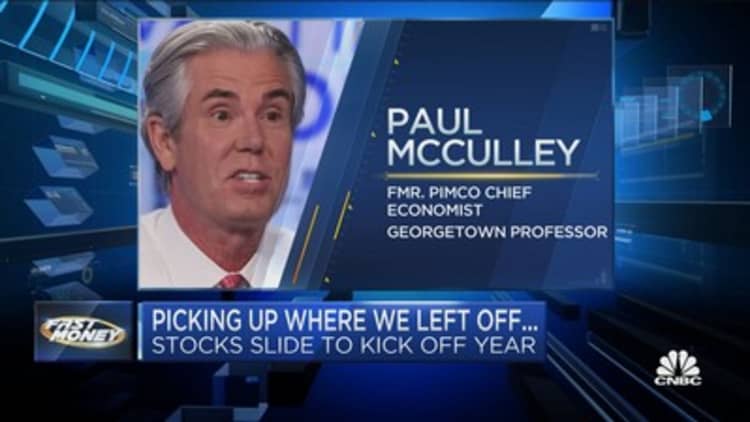
Stocks rose and rates fell on Wednesday as investors awaited key economic data reports showing how the U.S. economy is faring amid Federal Reserve rate hikes to curb inflation.
The Dow Jones industrial average rose 109 points, or 0.33%. The S&P 500 and Nasdaq Composite rose 0.48% and 0.41%, respectively. The yield on the 10-year U.S. Treasury note slipped more 11 fundamental points investors await from the central bank’s latest meeting. Yields and prices move in opposite directions, and one basis point is equal to 0.01%.
Sentiment was lifted in part by encouraging inflation data from Europe, including a larger-than-expected decline in the French consumer price index and a decline in German import prices.
The November jobs and labor turnover report, or JOLTS, came in slightly better than expected, indicating continued labor market strength. The ISM manufacturing index was also roughly inline in December.
U.S. stocks started 2023 lower on Tuesday as rate worries, high inflation and recession fears dampened hopes that Wall Street could start the new year on a positive note. The S&P 500 and Nasdaq Composite lost 0.4% and 0.8%, respectively, while the Dow closed just below the breakeven. Major indices were also pressured by steep declines in shares of Apple and Tesla.
“U.S. stocks were unable to hold on to earlier gains as tight policy and recession fears were front and center for investors,” Onda senior market analyst Ed Moya wrote in a note to clients on Tuesday. “Discount buying sparked another short-lived bear market rebound.”
Investors will get more insight into what central bank members are thinking on Wednesday afternoon when the minutes of the central bank’s latest policy meeting are released. Earlier in the day, the jobs and labor turnover survey, or JOLTS, and ISM manufacturing data are due to be released.
Friday’s December jobs report will also be closely watched as it is the last reading on the labor market before the central bank’s meeting in February.
“It’s too early to start betting on a Fed pivot this year, which should create this difficult environment for stocks,” Moya said.